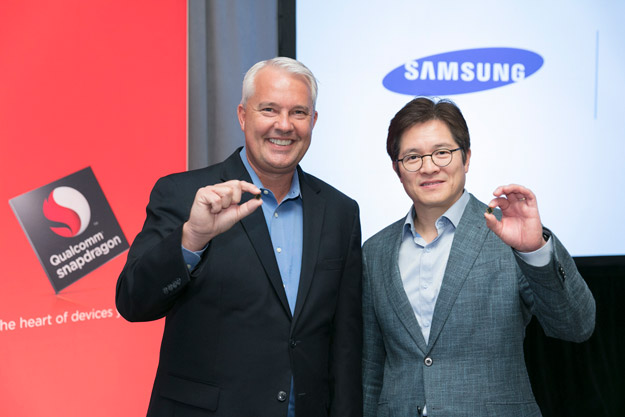Qualcomm Announces Snapdragon 835 Built On Samsung 10nm Tech With Quick Charge 4 For 5 Hours Of Charge In 5 Minutes
“Using the new 10nm process node is expected to allow our premium tier Snapdragon 835 processor to deliver greater power efficiency and increase performance while also allowing us to add a number of new capabilities that can improve the user experience of tomorrow’s mobile devices,” stated Keith Kressin, SVP of product management for Qualcomm.

Samsung’s 10nm FinFET process will allow for Qualcomm’s processors to see a 30 percent boost in area efficiency and 27 percent higher performance or up to a 40 percent reduction in power consumption, marking a dramatic improvement in performance-per-watt.
Although Qualcomm isn’t giving us any architectural details on the Snapdragon 835, it is the successor to the Snapdragon 820 (and its slightly higher clocked Snapdragon 821 sibling). Mobile products shipping with Qualcomm’s new high-end SoC will begin arrive during the first half of 2017.
But the Snapdragon 835 isn’t all that Qualcomm had to announce today; it also is pulling the wraps off the successor to QuickCharge 3.0. And as you might expect, its aptly named QuickCharge 4. QuickCharge 4 will be paired exclusively with the Snapdragon 835 initially, and brings up to 20 percent faster charging times.
With Quick Charge 4, smartphone users will be able to recapture 5 hours of battery life in just 5 minutes (using a 2750 mAh battery as an example). In addition to charging faster and doing so more efficiently than Quick Charge 3.0, Quick Charge 4 also allows the smartphone to stay 5 degrees Celsius cooler when plugged into the wall.
“As mobile devices become more capable and feature rich, people tend to use them more. That’s why consumer demand and awareness for fast-charging solutions is now at an all-time high,” said Alex Katouzian, Qualcomm’s SVP for product management.

One big change that’s been made with Quick Charge 4 is the support for both USB Type-C and USB Power Deliver (USB-PD) specifications. Google hasn’t exactly been singing the praises of proprietary charging solutions like Quick Charge 3.0. Google’s primary issue with Quick Charge 3.0 was that it altered Vbus voltage to increase the charging rate, thus violating USB Type-C specifications. The company threatened to enforce mandatory compliance with USB-C spec for Android OEMs. Since Quick Charge 4 is fully USB Type-C and USB-PD compliant, Google should no longer have cause for concern going forward.
And given that Samsung has gone through a lot of grief with respect to battery issues with its [now recalled] Galaxy Note 7, it’s comforting to know that Quick Charge 4 has plenty of safety features in place to protect your smartphone’s battery including over-voltage protection and over-temperature protection. It also employs features like step-charging, where the system will charge the device, then ramp down so as to not stress the battery, and ramp back up again after a rest period.
Like the Snapdragon 835, Quick Charge 4 (and its supporting SMB1380 and SMB1381 power managements ICs) will be available in the first half of 2017.




